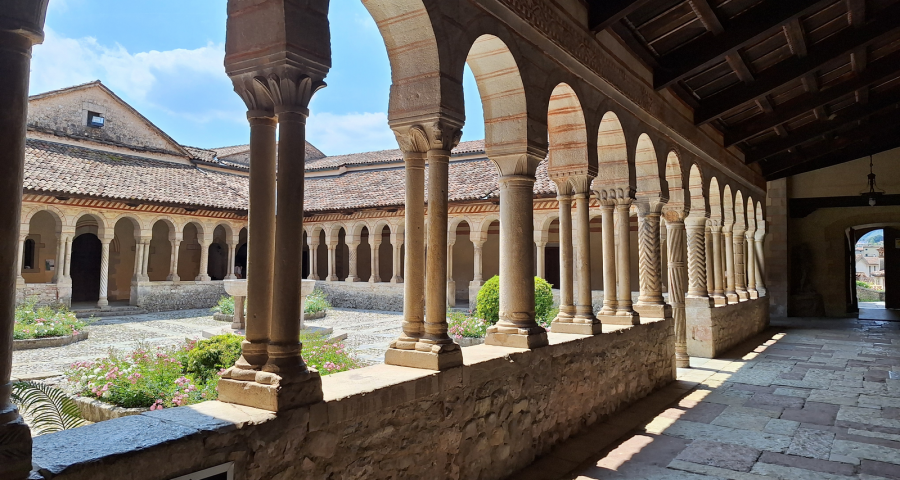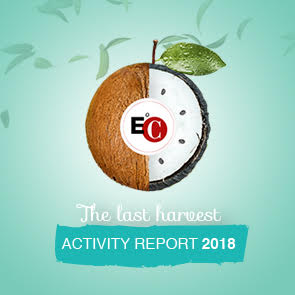The spread of business consulting techniques in convents and monasteries is affecting religious life. But prophetic inspiration comes from extremes, not from the “middle ground” between possibilities.
by Luigino Bruni
published in Avvenire on 02/08/2025
The theories, methods, and techniques of business consulting and management are making their way into congregations, convents, movements, and communities. The most visible phenomenon is the organization of assemblies and chapters that no longer take place without one or more external experts who lead—or “facilitate”—as if in a decade we had forgotten centuries of charismatic wisdom and become relationally illiterate. Post-it notes now mark the new environment, leaders are encouraged to participate in leadership courses, and communities are called to discover their “mission” and “purpose” based on their “vision” that emerges during “world cafés,” sacred words of the new karma of religious life. A nun with a ‘missionary’ charism told me with amazement after one of these courses: “Do you know that I discovered that we too have a ‘mission’?” The theme of leadership is perhaps the most worrying phenomenon, which is why we will look at it closely in the next article. These tools are very popular: they are agile, light, feminine, and enchanting. These techniques and practices originated in the world of large companies, which borrowed them from organizational psychology. And so, even though they present themselves as neutral techniques, they bear the physical and ethical traits of large global companies. In reality, no technique is free from ideology and values, but the great ideology of technique is that it presents itself as ideology-free.
What is behind this growing “corporatization” of religious life? Among the many reasons, one is decisive. Charismatic communities were born with a very specific idea of government and relationships, which has recently entered into crisis in its encounter-clash with modern culture. Those ancient institutions were in fact the expression of an unequal, hierarchical, and patriarchal society. The three religious vows were adequate instruments to ensure their functioning: celibate people without families, without rights to their own wealth and inheritance, and bound to their superiors by a sacred bond of obedience. In the space of a generation, this model has shattered, and communities have remained relationally mute, especially with the young children of this new world. Thus, in this profound silent identity crisis, powerful corporate tools are perceived as salvation. Consulting fills a void, but then quickly creates infantilization and a lack of autonomy in communities, which adds to the dependence (addiction) and growing insecurity of those in charge, who then seek more and more advice on everything; and so the technicians end up becoming not only ghostwriters of speeches and documents, but also invisible directors and superiors. It is clear, then, that it is demand (on the part of communities) that generates supply. It goes without saying that honest consultants in religious life (I know some) exist and are needed, especially when they seek to adapt tools and techniques, attempting to hybridize charisms with the corporate and psychological worlds. But the heart of the problem lies with the communities themselves, which must take back control of their own destiny.
Something different, very different, is needed, and quickly. Charismatic communities are not businesses. They are certainly organizations, but their identity is too different from that of businesses to be treated with the same tools. They are 98% similar, like our DNA and that of chimpanzees, but if we do not see and understand that 2% difference, we understand nothing about a convent or a monastery. A nun is not an employee of her institution, she is not a collaborator, she is not a human resource, nor is she a follower of a leader. She does not have a purpose, she does not have a vision: she has a charisma (without possessing it), which is something profoundly different from anything taught in business or work psychology schools. Almost all technicians and experts do not have, nor can they have, sufficient biblical or theological knowledge, let alone any real experience of the mysterious world of charisma and the Spirit, the most mysterious and wonderful thing on earth. Let us not forget that the entry of external technicians into companies arose from the need to mediate direct working relationships, so that managers would not “touch” the emotions of their increasingly complicated and fragile employees. The external expert, in fact, “touches” people in place of “leaders.” Techniques are therefore instruments of relational “immunity.” But let us ask ourselves: what remains of charismatic communities if the culture of immunity prevails, if it is true that ‘immunity’ is the negation of “community”?
Let us consider, for just one example, a chapter of a congregation. The methods of experts in participatory techniques create the well-known median syndrome: in the transition from the ideas of the individual to the working group document and then from the groups to the final synthesis, the techniques tend to select the median theses and values, and therefore to discard the extremes. This methodology works for (the easy choices of) businesses, for political decisions and for institutions, including those of the Vatican or dioceses (where it is very popular today), where it is necessary to reduce conflicts between positions and quickly arrive at solutions that satisfy many or the majority. In charisms, however, the median rule does not work. Charisms are the heirs of the biblical prophets, and prophetic solutions and ideas (almost) always come from the extremes, from the outcasts, not from the median. If the median method is applied in the chapters, one ends up writing documents where the most innovative ideas are not to be found—it is the phenomenon that my friend Tommaso Bertolasi calls the “rice cake”: everyone can eat it because it tastes of nothing. No idea of Isaiah, John the Baptist, or Jesus would be selected today by a facilitator because they deviate too much from the median. The same median result occurs when final documents are written by adding up the summaries of the group work. The median syndrome tends to avoid or reduce conflict, but in charisms there is no real solution without addressing, bringing out, and nurturing conflict (just think of the Bible, Paul, and the Gospels). In short, if charismatic communities dug deeper into the heart of their charism, they would find insights and wisdom which, when put into practice, would be the only right way to lead the community, chapters, and assemblies. Change is therefore necessary. A spiritual community that does not want to die or turn into an NGO should make little and subsidiary use of consultants, choose them wisely, and work harder on the organizational culture of its own charism. Outsourcing community relations is not like contracting out the convent's canteen or cleaning services—in relationships, the whole charism is at stake. The first and decisive step is up to the community, with the people and talents it has, here and now, as it knows and as it can. “Give them something to eat yourselves” (Lk 9:13). This work must be jealously guarded within a collective intimacy, otherwise, before long, and without realizing it, all that will remain of the charism will be a few pictures of the founder and a thought for Christmas greetings.
(to be continued)








